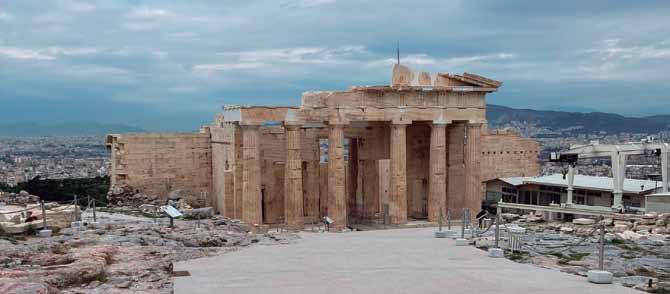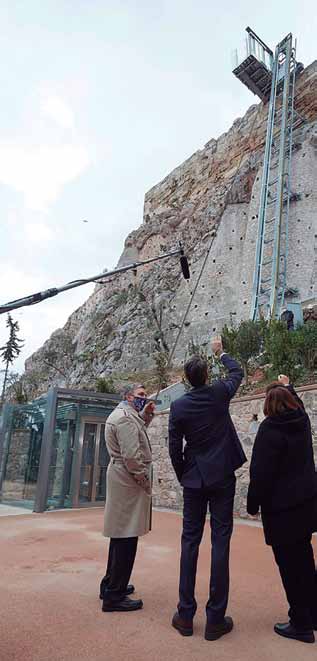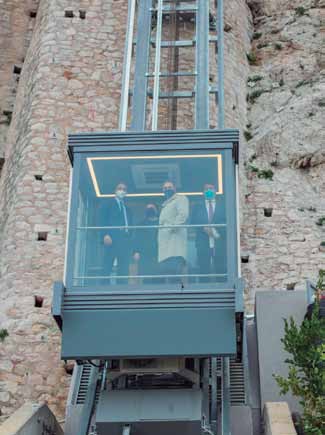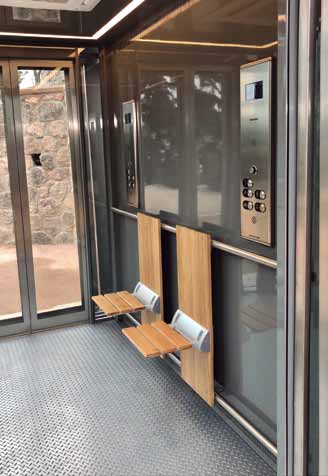
Accessibility in the cradle of civilization
The Acropolis of Athens, the symbol of Western civilization, is now more accessible to people with disabilities after it was put into service a new elevator last December 3. In the presence of the Greek Prime Minister Kyriakos Mitsotakis, the Minister of Culture and Sports Lina Mendoni, and the President of the Onassis Foundation, Antonis S. Papadimitriou, a lift was open for people with difficulties and also was open the new pedestrian path, in the International Day of Persons with Disabilities. Unique in the world, this slope elevator for the Acropolis reaches the top in 32 seconds.
This elevator will facilitate access to the monuments of the Acropolis of Athens, capital of Greece, to wheel chairs users, elderly people, and other people with more mobility.
The new glass-walled elevator allows riders to see almost unobstructed views of Athens as they climb the wall, will begin at the level of the old main promenade, on the north slope of the Acropolis, and will transport visitors directly to the top of the hill. The project that significantly improves attendance at the monuments of the Holy Rock, is framed within the program to improve the services provided at The Acropolis. Thus, the archaeological site becomes fully accessible for people with disabilities, but also for all citizens with mobility or other problems.
Slope elevator technical data
The sloping elevator replaces the former elevator, which was installed in 2004 on the north side of the Acropolis, on the occasion of the Olympic Games, to enable the visit of the disabled to the Holy Rock. At the same, a construction corridor was built from the elevator exit to Panathinaion Street, north of the Parthenon, so that people in wheelchairs could at least see the monuments. The elevator began to present serious problems in its operation.
Already since the beginning of 2018, scenes of disabled transporting people “in the hands” of the personnel of the Ministry of Culture or by their assistants were recorded.
From spring 2019 the elevator almost did not work, while problems intensified in the summer of 2019, causing the country to be exposed internationally, since people with disabilities from all over the world came to the monumental to and could not go up.
It is a variable angle lift, manufactured by the Italian company Maspero Elevatori. With a capacity of 1300 kg payload equivalent to two wheelchairs with two attendants or an ambulance stretcher with an attendant.
The type’s choice was made according to the topography of the area and geotechnical data, based on constructive studies that were prepared for the project. The elevator is certified by the international company TÜV, such as it is defined by the European Regulation on slope elevators. It is noted that there is no similar elevator in other monuments. It is the only one in the world because structurally its variable angle is close to the verticality, while its perimeter glass cladding offers a unique panoramic view.

The time required for the elevator to ascend and descend the wall is 32 seconds. With the old elevator, the user had to go from the street to the level of the current engine room using a stair lift and then take the elevator to the top. This technology was completely obsolete even as a construction lift.
Spare parts were missing and everything needed was done at home.
At a technological level, the new slope elevator is a cutting-edge one, offering comfort, speed, safety with its safety valves in case of a power outage during the operation.
In the event of a power failure, it is possible to rise to the entrance road level using alternative means of operation (battery).

Through a notification system of Dual GSM card, communication is done with five receivers programmed for any fault or emergency. The system is activated automatically in case of damage, seismic vibrations, wind, ice, or trapping and sends an immediate notification to those responsible for the correct handling of each case. It is observed that in cases of very low temperature, the elevator moves automatically on the guide rails every 10 minutes, so as not to allow a layer of ice to build upon them.
For the execution of the required works, there was a team of supervising archaeologists team from the Ministry of Culture and Sports throughout the execution of the project, with whose collaboration all measures were taken to ensure the protection of the monuments. The installation required infrastructure works, which included partial excavation, drilling, and installation of 35 stainless steel anchors in the Balano wall and grout filling to secure the metal supports that hold the elevator guides. In addition, the old platform [at the top] was removed and the new one, of 12.90 m long and 1,60 to 1,90 wide, was placed.

Information on the new routes for disabled
New routes for the disabled cover the north side and east of the Parthenon, so that the disabled can visit the monuments of the archaeological site, after arriving by elevator.
The total length of the new routes is 500 m. The configurations, horizontal and altitude, follow the archaeological data, restoring the ancient carvings on Panathinaion Street.
The routes connect the upper exit of the slope elevator with Panathinaion Street, to the area of the ancient museum. Therefore they spread out in front of the Propylaea, from the Parthenon and reach the southern slope.
As clarified by the Ministry of Culture, the material chosen for the pavement, as aesthetically acceptable, is architectural concrete with only 12% of cement content.
The end result is an artificial stone, corresponding to the materials used to complete the monuments. The materials were evaluated with applications test on-site by the Conservation Committee of Monuments of the Acropolis. All the project it is completely reversible.
Two vehicles (golf cart type) will facilitate access to the new slope lift for the disabled and people with mobility problems. The vehicles will depart from Dionysiou Areopagitou Street with a capacity for 6 people (including the driver) plus a wheelchair.
Respectively, for the vehicle that will depart from the Rock Sacred, there is a provision for a capacity of 6 people (including driver) not including a wheelchair.
Sources:
athina984.gr; accessibletourism.org; greekreporter.com
URL of the video on youtube:






